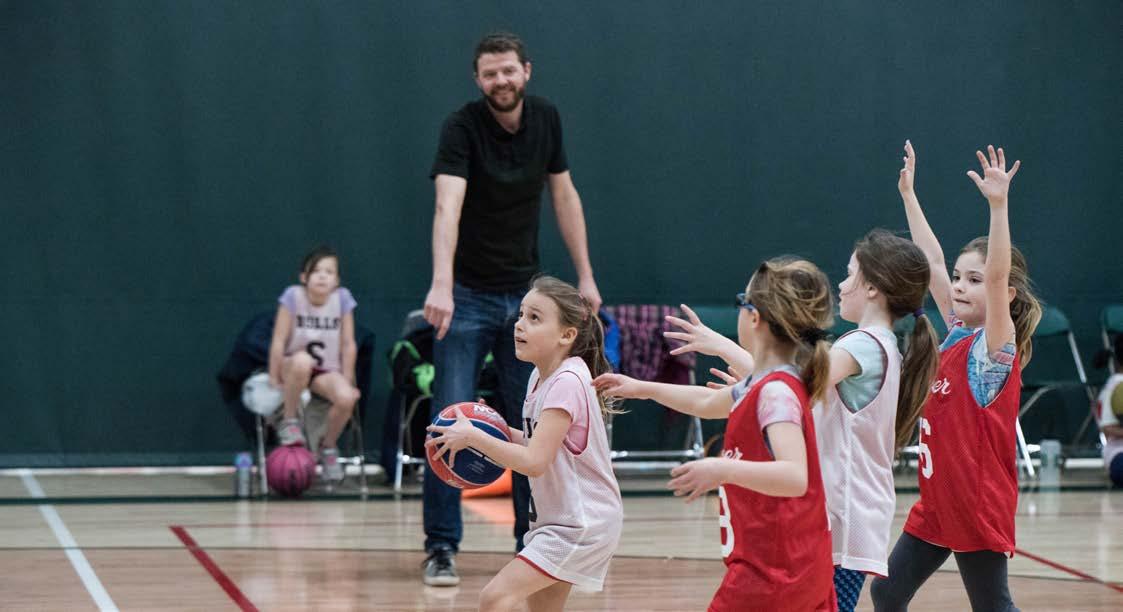
3 minute read
Fees and Registration
Registration fees are a major source of funding for park and recreation agency youth sports offerings. More than nine in 10 agencies rely on registration fees to fund their youth sports offerings. Tax support is also a critical funding source for youth sports offerings — 40 percent of park and recreation agencies use general fund tax support to finance their youth sports offerings while six percent of agencies have access to dedicated or special tax/levies to support these activities. Some agencies also support their youth sports offerings by generating non-registration fee revenues. For example: • Field/Court rentals (cited by 39 percent of respondents) • Local sponsors (e.g., small business) (37 percent)
In addition, a relatively small percentage of park and recreation agencies support their youth sports activities from grants: • Foundation grants (five percent) • Federal or state grants (three percent)
Advertisement
Registration Fees and Tax-Support Provide the Main Revenue Sources for Youth Sports Activities
91% (Percent of Agencies)
40% 39% 37%
Registration fees General fund tax support
Field/Court rentals and related earned revenue Local sponsors (small businesses or other organizations) Dedicated or special tax Foundation grants Federal or state grants
6%
Durango (Colorado) Parks and Recreation hosts a youth soccer program at Smith Sports Complex.
5% 3%
An overwhelming majority of park and recreation agencies charges registration fees for all of their youth sports offerings (92 percent). Fee requirements are nearly universal among agencies regardless of locale.
Fees are a critical part of a park and recreation agency’s cost recovery and operating budget. At the same time, registration fees can be barriers that hamper access to youth sports for many lower income residents. One method that agencies use to expand access is offering reduced fees or discounts to lower income residents. Two in three agencies offer reduced or discounted fees for lower income residents. Reduced fees are most commonly offered by urban agencies (61 percent) and rural agencies (56 percent). In comparison, only 38 percent of suburban agencies offer reduced fees to lower income residents for their youth sports activities.

Winnebagoland BMX at Sunnyview Expo Center was voted best track in Wisconsin five years in a row, which allowed it to host the state meet where riders of all ages compete.
Vast Majority of Park and Recreation Agencies Requires a Registration Fee to Participate in Youth Sports Activities (Percentage Distribution)
3% 5%
92%
n Agency charges for all youth sports activities
n Agency charges for select youth sports activities
n Agency does not charge for its select youth sports activities
n Agency offers reduced fees for lower income residents for all activities
n Agency offers reduced fees for lower income residents for some activities
n Agency does not offer reduced fees for lower income residents for all youth sports activities
Nearly Two in Three Park and Recreation Agencies Offer Reduced Fees to Lower Income Residents (Percentage Distribution)
35%
14% 51%
Park and recreation agencies set registration fees based on a mix of costs and the competitive market. Three-quarters of park and recreation agencies base their youth sports registration fees primarily on expenditures. One-third of agencies considers the rates charged by their competitors — including those of the YMCA/YWCA, Big Brothers/Big Sisters and other private providers — when setting rates for their youth sports offerings. Twenty-one percent of survey respondents report their agencies conduct studies that scan the marketplace and consider their expenditures when setting their fee structure. As necessary as they may be to cover costs, participation fees often present a formidable barrier that prevents lower income families from enjoying the benefits of youth sports. An inability to pay registration fees can have a lasting impact on youth. Ten percent of survey respondents indicate that their agencies’ youth sports fees are on a sliding scale based on the participant’s household income. Some agencies go a step further by removing all fees for lower income residents (three percent).
Agency Expenditures Typically Determine Youth Sports Activities Participant Fees (Percent of Agencies)
Rates set according to expenditures
Rates set to be comparible to competitors (e.g., the YMCA/YWCA; Big Brothers/Big Sisters)
Agency conducted a fee study
Rates set on a sliding scale based on the participant’s household income
Fees removed for all youth in lower income communities
10%
3% 21% 34% 76%
A Glenview (Illinois) youth basketball league participant drives for a layup.







